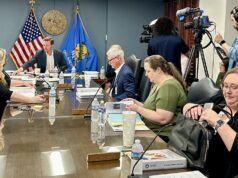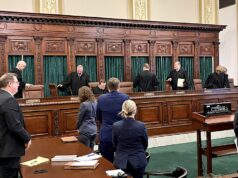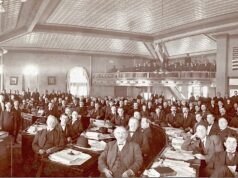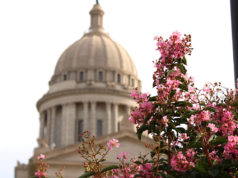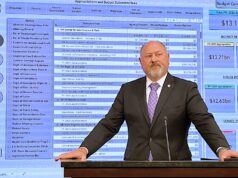
Beauty is in the eye of the beholder.
“This is the beauty of the building,” House Appropriations and Budget Chairman Kevin Wallace (R-Wellston) said last week about education funding negotiations. “All three have to agree or nothing happens. The Legislature passes bills, and the governor (signs or) vetoes. (…) At the very end of the process, the negotiations will decide what bills will be passed with title on and sent to the governor and how the budget will come together.”
For legislative junkies who enjoy watching the political sausage be ground, seasoned and stuffed into its casing, Wallace’s words ring particularly true this year. While the Oklahoma Legislature spent the past four years trying to agree how best to boil a revenue banger, this year’s lawmakers are laying out the china and carefully choosing guests for a financial fête. With bountiful new dollars available for appropriation, the question becomes one of portion sizes for the assembled state agencies, advocates and interests.
With that in mind, the 2019 legislative session’s first three weeks have unfolded relatively smoothly, with only mild drama playing out in a few committee hearings and bipartisan joviality defining last week’s House appropriations meetings.
Guns, abortion and percolating problems
But as the Legislature faces its first deadline this week — policy bills must clear a committee in their chamber of origin — it’s important to note how tensions are brewing on several issues that typically strain relationships annually.
Senate Health and Human Services Committee Chairman Jason Smalley (R-Stroud) has seen his face plastered on billboards and digital documents spread by Free The States, an abortion abolitionist group. Thursday, Smalley stood with Senate President Pro Tempore Greg Treat (R-OKC) and other Senate leaders as Treat announced an attempt to neutralize the abortion abolitionists’ criticism aimed at Smalley and his caucus.
“It’s been nothing boring and mundane this week,” Treat said before announcing SB 195 would be amended to set the stage for re-criminalizing abortion in Oklahoma. “Five states in the United States have already done what are called ‘trigger bills,’ which when Roe v. Wade is overturned — which is all our hope and desire in the Republican (Senate) Caucus — that the law that was in place pre-1973 that made abortion a felony in Oklahoma will be reinstituted with the protection still of the life of the mother.”
Meanwhile, a bill dealing with another of the GOP’s favorite subjects — guns — is preparing to take its final step (Senate floor consideration) toward the governor’s desk. Replete with 29 House Republican co-authors, HB 2597 has breezed through the Legislature so far as a compromise version of the permitless carry of firearms bill vetoed last year by then-Gov. Mary Fallin. This year’s version retains the property owner protections that business groups, education establishments and sports franchises sought, leaving few beyond House Democrats, a trio of House Republicans, some clergy and the Moms Demand Action advocacy group opposing the measure.
The speed with which this year’s permitless carry bill — called “Constitutional carry” by advocates — has advanced seems to have stemmed from two desires, according to Capitol insiders. First, some believe Gov. Kevin Stitt would prefer that medical marijuana changes not be the initial piece of major legislation he signs. Second, with the expectation of tight and contentious budget negotiations in April and May, legislative leaders would like to avoid having controversial “social” issues like gun rights complicating internal GOP caucus negotiations at that time.
While those policy proposals could reach their conclusions sooner than later, several others could be percolating problems for peace and civility at the Capitol: proposed workers’ compensation reforms, Stitt’s demand that he appoint more state agency directors, and his desire not to appropriate $200 million of available revenue, an argument that makes veteran lawmakers smirk when asked if they intend to listen to the political newcomer.
Nuances, beauty of the building tough to report
With all of these subtle machinations churning Oklahoma’s legislative gears, it’s easy to understand why the casual — or active — onlooker might not see beauty in the process. For the outsider looking in, reports from the Capitol struggle to capture the building’s nuances or beauty. That can leave the public frustrated and even innocently misinformed.
Likewise, no matter where on the political spectrum people fall, they rarely end up getting everything they want out of law-making season. Oklahoma’s Legislature went from 100 years of Democratic control to a decade’s worth of hard right turns. The past two election cycles have seen Oklahoma’s needle pull back to the middle, a moderation of ideology that can ironically aggravate both political bases.
When no one gets everything they want, it’s hardly surprising that few see the beauty of democracy.










